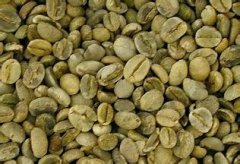A brief introduction to the grading system of Ethiopian, Ethiopian and Bancimaji coffee beans

In the West, Ethiopian coffee is generally labeled and (Yirgacheffee, Sidamo and Harrar) sold on the market. In the field of boutique coffee, there are also five other small places of coffee, namely Lim, Gemma, Le Campdi, Becca and Limmu, Djimmah, Lekempti, Bebeka and Wolega. The most commonly seen coffee is Essidamo or Harald (Either Sidamo or Harrar coffee).
Although the flavor of Bancimaji Gesha estate is different from that of Panamanian Geisha, it is still worth tasting because of the rare and varied flavor of spices and fruits in Ethiopia.
It is worth trying, the story behind the coffee is more shocking, in short, it is worth tasting!
The Ethiopian sun is sour and sweet, switching between complex ripe fruit flavors and a hint of woody spices. If you measure the word by cup, it is [complex complex] and [resonant resonant]. Recently, I happened to have the opportunity to drink a medium-baked mocha pot. After the flavor is concentrated, I can feel more complex and changeable. I used it to mix it with Daterra Santa Colomba to make an alternative formula bean.
The coffee producing areas of Ethiopia are Sidamo, Harald and Sidamo, Harrar and Yirgacheffe. Sidamo and Harrar are provinces and divisions, Sidamo is located in the south of Ethiopia bordering Kenya, and Harrar is bordering Somalia in the east of Ethiopia. Although Yirgacheffe is a community in the Sidamo region, its coffee is considered to be the best in Ethiopia because of soil composition and water content.
Important Notice :
前街咖啡 FrontStreet Coffee has moved to new addredd:
FrontStreet Coffee Address: 315,Donghua East Road,GuangZhou
Tel:020 38364473
- Prev

A brief introduction to the taste and flavor characteristics of boutique Banqi Maggie coffee beans in southwestern Ethiopia
This year, we will introduce this unique style of sun-tanned coffee to share with more friends. Banchimaji Bench Maji, located in southwestern Ethiopia and not far from neighboring Sudan, is easy to find using Google map. Although the flavor of Bancimaji Gesha Estate is different from that of Panamanian Geisha, it is still worth tasting in Ethiopia.
- Next

A brief introduction to the flavor and taste of the manor of the origin of Ethiopian Bancimaji coffee beans
Ethiopia, the grading and quality control system of coffee is divided into three levels: producer, regional and national. All coffee is inspected by local inspection agencies before leaving the country of origin, and then re-tested at the coffee inspection and grading centers in Addis and Diredawa to determine its quality grade. Coffee is graded before auction and sale, for all involved in production, acquisition and sale.
Related
- Detailed explanation of Jadeite planting Land in Panamanian Jadeite Manor introduction to the grading system of Jadeite competitive bidding, Red bid, Green bid and Rose Summer
- Story of Coffee planting in Brenka region of Costa Rica Stonehenge Manor anaerobic heavy honey treatment of flavor mouth
- What's on the barrel of Blue Mountain Coffee beans?
- Can American coffee also pull flowers? How to use hot American style to pull out a good-looking pattern?
- Can you make a cold extract with coffee beans? What is the right proportion for cold-extracted coffee formula?
- Indonesian PWN Gold Mandrine Coffee Origin Features Flavor How to Chong? Mandolin coffee is American.
- A brief introduction to the flavor characteristics of Brazilian yellow bourbon coffee beans
- What is the effect of different water quality on the flavor of cold-extracted coffee? What kind of water is best for brewing coffee?
- Why do you think of Rose Summer whenever you mention Panamanian coffee?
- Introduction to the characteristics of authentic blue mountain coffee bean producing areas? What is the CIB Coffee Authority in Jamaica?

